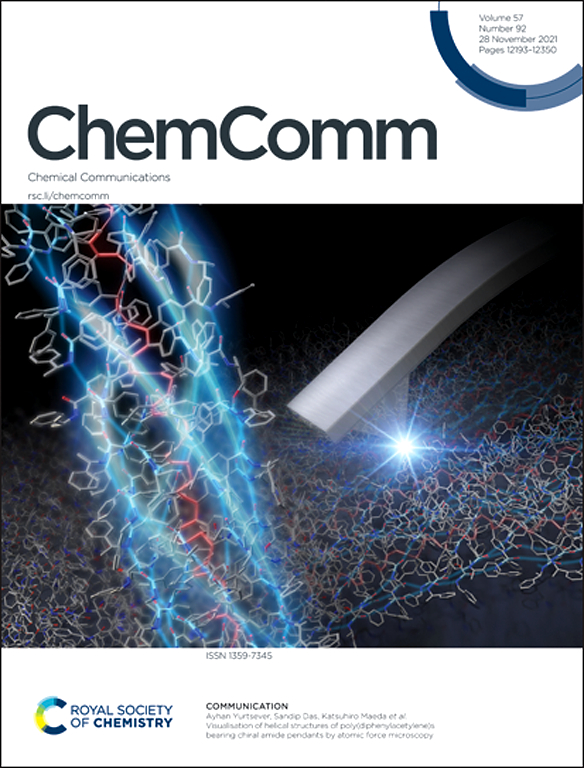Conversion of CO2 into cyclic carbonates using an ionic porous organic cage†
IF 4.3
2区 化学
Q2 CHEMISTRY, MULTIDISCIPLINARY
引用次数: 0
Abstract
The conversion of carbon dioxide (CO2) into value-added chemicals offers a promising path for greenhouse gas utilization. Porous organic cages (POCs), an emerging subclass of porous materials, have shown great potential in catalysis, primarily as catalyst supports and stabilizers for metal nanoparticles (MNPs) to enhance their catalytic activity. Herein, we report the use of an ionic POC () as a metal-free catalyst for the cycloaddition of CO2 and epoxides, generating cyclic carbonates in high yields. This POC catalyst is highly efficient, achieving a maximum yield of up to 90% with a turnover number (TON) of 3000 without requiring reaction solvents. Moreover, with the synergistic effect of 1,8-diazabicyclo[5.4.0]undec-7-ene (DBU), the catalytic performance can be further enhanced across a wide substrate range.
利用离子多孔有机笼将二氧化碳转化为环状碳酸盐
二氧化碳(CO2)转化为增值化学品为温室气体利用提供了一条有前途的途径。多孔有机笼(POCs)是一种新兴的多孔材料亚类,主要作为金属纳米粒子(MNPs)的催化剂载体和稳定剂来增强其催化活性,在催化方面显示出巨大的潜力。本文报道了离子POC (OFT-RCC36+6Br−)作为无金属催化剂用于CO2和环氧化物的环加成,以高收率生成环状碳酸盐。这种POC催化剂效率很高,在不需要反应溶剂的情况下,转化率高达90%,周转数(TON)为3000。此外,在1,8-二氮杂环[5.4.0]十一-7-烯(DBU)的协同作用下,可以在更大的底物范围内进一步提高催化性能。
本文章由计算机程序翻译,如有差异,请以英文原文为准。
求助全文
约1分钟内获得全文
求助全文
来源期刊

Chemical Communications
化学-化学综合
CiteScore
8.60
自引率
4.10%
发文量
2705
审稿时长
1.4 months
期刊介绍:
ChemComm (Chemical Communications) is renowned as the fastest publisher of articles providing information on new avenues of research, drawn from all the world''s major areas of chemical research.
 求助内容:
求助内容: 应助结果提醒方式:
应助结果提醒方式:


